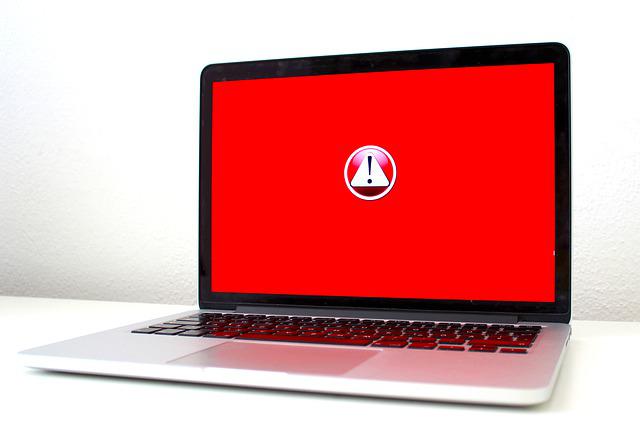The “Page Fault In Nonpaged Area” error is a prevalent issue that Windows users encounter, often leading to system crashes and instability. This error indicates that the system attempted to access a non-existent or inaccessible memory page, typically within the nonpaged area of memory.
Understanding the meaning, underlying causes, and effective solutions for the “Page Fault In Nonpaged Area” error is essential for resolving it and restoring system stability. In this comprehensive guide, we’ll delve into the intricacies of this error, explore its causes, and provide actionable solutions to mitigate its impact on your Windows system.

Deciphering the Page Fault In Nonpaged Area Error
The “Page Fault In Nonpaged Area” error, often accompanied by a blue screen of death (BSOD) and error code 0x00000050, indicates that the system attempted to access a memory page that was either non-existent or inaccessible within the nonpaged area of memory.
The nonpaged area refers to a section of physical memory that Windows reserves for critical system processes and data that must remain in memory at all times. When the system encounters a page fault within this area, it signifies a serious memory management issue that requires attention.
Read Also:
Causes of the Page Fault In Nonpaged Area Error
Several factors can contribute to the occurrence of the “Page Fault In Nonpaged Area” error:
- Faulty RAM Modules: Defective or failing random access memory (RAM) modules are a common cause of this error. When the system attempts to access data stored in a faulty RAM module or encounters errors while reading or writing to memory, it can trigger the error.
- Corrupted System Files: Corruption in critical system files or the Windows registry can disrupt memory management processes and lead to the occurrence of the error.
- Driver Issues: Outdated, incompatible, or faulty device drivers can cause memory-related errors and trigger the “Page Fault In Nonpaged Area” error. Drivers play a crucial role in managing memory access and must be compatible with the hardware and operating system.
- Hardware Issues: Other hardware-related issues, such as a failing hard drive, corrupted file system, or overheating CPU, can contribute to memory management errors and result in the occurrence of the error.
How To Fix a Non-Paged Error?
There are a variety of possible causes for a BSOD. Some defective system services or code may have been installed, according to Microsoft. This is possible. Antivirus software may also be at blame.
It is imperative that this issue be addressed because it can lead to more serious problems, such as frequent OS crashes, loss of data, and malfunctioning hardware and software.
Uninstalling the update should fix the problem if it’s the result of a broken system. However, if uninstalling does not solve the problem and the OS continues to crash, read the article and follow the solution provided.
1. Creating a New Pagefile
Windows makes advantage of hard disc space to store frequently used programmes in a page file. Disabling the page file is the only way to fix this problem. The following are the next measures to take:-
Step 1: To begin, hold down the Windows key while clicking R on the keyboard. Afterwards, you’ll see a run dialogue box. You may launch system properties by pasting SystemPropertiesAdvanced.exe into the command line and pressing Enter.
Step 2: After that, go to System Properties and select Advanced from the drop-down menu that appears. Select performance from the drop-down menu, and then click on settings.
Step 3: From the opened dialogue box, press forward once more and untick Manage paging file size automatically for all drivers.
Step 4: After that, select No paging file and confirm all warnings by pressing Set and clicking OK. Close all open windows and restart your computer by pressing the OK button a second time.
Step 5: To go to Virtual Memory, repeat all of the above-mentioned steps in reverse. Select the system-managed file and press the set button now! Afterwards, check the box for “Automatically manage paging file size for all drivers” and click OK to shut down and restart the system.
During this procedure, all faulty data in the page file will be deleted. If that doesn’t work out, try the second option we’ve provided.
2. Perform a Chkdsk Check
Whether the hard disc isn’t working, the first thing we can do is scan it to see if it can be repaired. Here are the steps to take if you’re not sure how to do it:
Step 1: To begin, click Start, type CMD into the search box, and then right-click it to choose Run as administrator. Once you’ve entered the command, press Enter.
Step 2: As soon as the notification appears stating “The drive is locked, and if you’d like to have a chkdsk scheduled for the next restart, type Y for yes” and press Enter, type Y and press Enter.
Step 3: This is the final step, so sit back and relax. It will detect and repair your hard disc on its own volition. Finally, restart the computer.
If Windows still crashes after attempting the aforementioned fix, continue reading.
3. Restore Your Computer Using System Restore
This problem can be solved with the use of a restore point. It restores the system to its previous state of flawless operation. However, you’ll need an existing restore point to do this.
Here are the procedures to follow if you already have a Restore Point:
Step 1: To begin, hold down the Windows key while pressing R. Enter rstrui.exe in the newly created dialogue window, and then hit ENTER. Recommend restoration would be the default option.
Step 2: The next step is to record the time and date of the last time the system worked flawlessly. To see additional points, select SHOW MORE RESTORE POINTS, then click Next and finally Finish to proceed.
SYSTEM RESTORE is the final step, so follow the instructions on the screen to complete it.No worries if you didn’t set up an earlier restore point; we can just move on to the next one now.
4. Make Sure Your Windows is Up To Date
Updates are typically supplied in the software industry to patch bugs and address issues. BSOD difficulties can also be solved by updating Windows. Make sure you constantly keep your device up to date by keeping an eye out for any new updates.
Most likely, you already know how to perform an update, but just in case, here are the steps you need to take: – Windows 7 and Windows 8:
Step 1: To begin, press the Windows key and look for any available updates. Enter your email address, and then click Sign me up.
Step 2: Download and install any updates that are available.
For Windows 10, go to the following URL:-
Step 1: The first step is to press the R key on your keyboard. Then, type there ms-setting: windows update and hit ENTER, and you’re done.
Step 3. Check for updates and perform the installation if any are found. If updating doesn’t work for you, try something else.
5. Interference With The Operation
BSOD issues are frequently caused by drivers that are out of date or incompatible with one another. This is more likely to occur after a recent Windows 10 upgrade. Do an automatic driver update or manually update the driver to determine whether or not a BSOD is caused by malfunctioning drivers.
In order to manually update, follow these steps:
Step 1: In the start menu, use the search box to look for DEVICE MANAGER. Next, start “DEVICE MANAGER” and pick the yellow-labeled device from the list. Right-click on the device and select “Software Update” from the context menu. Make sure you follow the instructions for updating.
Step 2: Uninstall the current driver and look for the best and device-specific one if you don’t find any updates.
If you’re still experiencing the problem, have a look. If this is the case, we can go to the following section.
6. Perform an SFC Scan
In Windows, the SFC scan is built-in and used to verify system files. It scans and repairs any files that could be hazardous. It explains the problem and fixes it, allowing the gadget to function normally again.
To do this, follow these steps:
Step 1: Before anything else, type cmd into the search bar when you press the Start button. Next, right-click on command prompt and select Run as administrator from the context menu.
Step 2: Once you’ve entered the command prompt, type sfc/scan now and press Enter. If any files are found to be corrupted, Sfc/scan will use cached copies of those files as a stand-in.
The final step is to close the prompt once you’ve finished. After completing all of the steps, look for the problem. Check out the following method if that persists.
7. Memory Diagnostics in Windows
These problems may be caused by faulty RAM. A defect in RAM, which is a critical component, might cause these kinds of issues in devices. We need a Memory Diagnostic tool to determine if the RAM is defective or not.
Here are the steps to follow:-
Step 1: To begin, press Windows key+R. Finally, type mdsched.exe and press Enter to begin. Finally, select your desired selections from the dialogue window that has shown.
Step 2: During the reboot, the RAM will be checked. If it detects an error, then you should investigate it further. If there are multiple RAM sticks, remove them and clean the gold contacts using an eraser. Also, use a toothbrush to clean the slots.
Make sure to check each stick individually to determine if you’ve made a mistake before moving on. The slot should also be checked.
Your device’s motherboard may have been destroyed if you don’t get an error with either of the RAM sticks. It can be fixed at any computer repair business that specialises in desktop and laptop computers.
Read Also:


